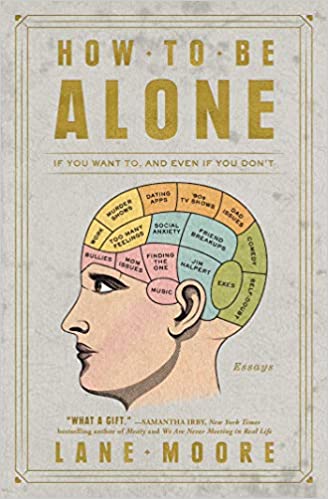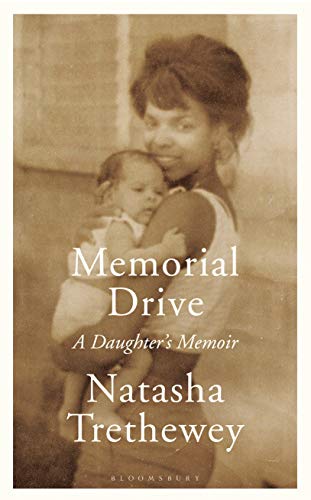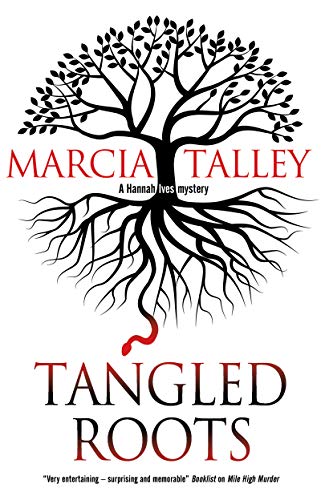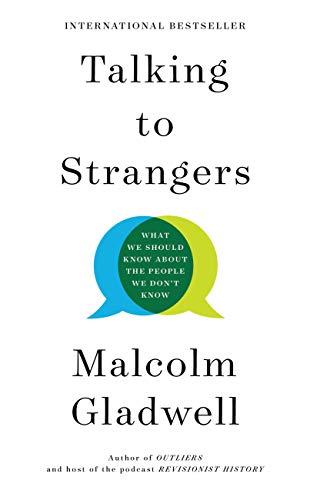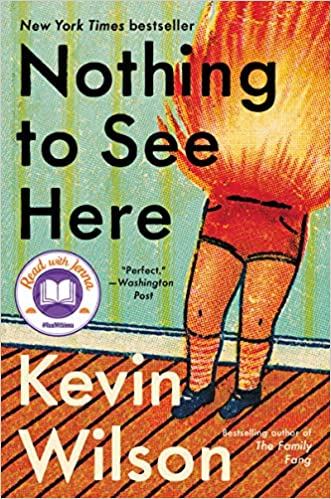How to Be Alone: If You Want To, and Even If You Don’t. Lane Moore. 2018. Atria Books. 224 pages. [Source: Public library.] Random scrolling in the Libby app led me to How to Be Alone, written by comedian, writer, and musician Lane Moore. I wasn’t quite sure what to expect, but the title caught my attention considering I enjoy my fair share of alone time. How to Be Alone, however, is less about the beauty found in solitude, and more about how the author coped with the physical and psychological isolation she has navigated since her childhood. In this memoir, Moore shares vignettes of her life that center her connections with other people — or lack thereof. From friendships, to relationships, and her career, she bares a lot in the name of transparency, and it reads a lot like a cautionary tale. The “how-to” aspect of the book was not prominent until the final chapter. The rest, however, did read like a “what not to do,” though I’m not sure that’s what the author intended. Moore isn’t specific in the book about the nature of what she experienced with her family, but she is clear about its impact on…
Memorial Drive. Natasha Tretheway. 2020. Bloomsbury Publishing. 229 pages. [Source: public library.] Mother-daughter relationships are so often fraught. Mothers are often entrusted with raising healthy, whole adults and it seems daughters will find themselves raging against the strain of expectation and vicarious dreams. If they’re lucky, time will give them opportunity to reconcile the tension and benefit from an understanding of each other that comes with age. Unfortunately, that’s not the story of Memorial Drive, Natasha Trethewey’s memoir. Instead, Memorial Drive starts off with the hard truth that Natasha and her mother Gwendolyn did not have the benefit of time bringing them closer with a renewed relationship. It starts where it ends, with Gwendolyn’s murder at the hands of her ex-husband when Natasha was a 19-year-old freshman in college. The rest of the book follows as Trethewey, more than 30 years on, reflects on her childhood and adolescence, framed largely around the relationship between her and her mother. She recounts her earliest years with her black American mother and white Canadian father in the relative cocoon of familiarity in Mississippi. Later, when her parents separate, she ends up in Georgia, where the majority of her trauma unfolds during a period…
Tangled Roots. Marcia Talley. 2019. Severn House Publishers. 180 pages. [Source: Public library.] Anyone who has participated in genetic testing or otherwise had their DNA analyzed will be familiar with a general disclaimer. The results may include something you are not aware of, and could be upsetting. Naturally, when Hannah Ives gets a call from her sister Georgina that her DNA test results indicate a 25% Native American heritage, the sisters are taken aback. They’ve grown up hearing about their family background, with its Puritan roots that make them a shoe-in for DAR membership. This little wrench, then, raises all kinds of questions about the truth of their grandparents. Tangled Roots presents Hannah’s attempts to figure out whether the results are a fluke or if they do indeed have Native American heritage and a family they’ve never known. Along the way, they deal with a shady death closer to home that threatens to wrench the family further apart and unable to trust anyone. From their quiet lives in the suburbs of Maryland to protests in the nation’s capital and visit to a remote Native American reservation, this story goes all over, both in plot and locale. As someone who is…
Talking to Strangers. Malcolm Gladwell. 2019. Little, Brown and Company. 401 pages. [Source: Public library.] I picked up Talking to Strangers with little in the way of expectations. I had a long drive, and wanted to listen to something I could concentrate on enough to stay awake. I got so much more than that with this book. Talking to Strangers asks two central questions — why don’t we know when people are lying to us and why don’t we believe people are telling the truth? The big picture example for this book is the traffic stop of Sandra Bland in 2015. Gladwell asks what went wrong in this encounter, and then uses a host of case studies to illustrate how people make sense of the words, actions, and intentions of strangers, often highlighting the missteps and misinterpretations thad led to disastrous outcomes. The book is both informative and entertaining in presenting various communication and behavioral theories. Gladwell shows skill in presenting both well and lesser-known situations with nuance that feels more like a conversation and less like sitting in a lecture hall. He presented the case studies with an appropriate level of succinctness while being sure to cover information that…
Nothing to See Here. Kevin Wilson. 2019. Ecco. 254 pages. [Source: Public Library.] Nothing to See Here starts off innocuously enough. Lillian and Madison were roommates in boarding school — Lillian because of an academic scholarship and Madison because it’s what’s expected for a girl from a wealthy family. Their time as roommates is short-lived, but the friendship continues more than decade later. Lillian’s not doing much in her life, and Madison’s the wife of a prominent politician, Jasper. Things go left when Madison asks her dear old friend to serve as a governess of sorts for her stepchildren, Bessie and Roland. Did I mention they spontaneously combust? I read about 4 pages into this book before I asked myself “what the hell am I reading?” I asked that several more times throughout the book. That’s not a critique; it’s just illustrative that this book was never quite what I expected. I waited for sordid family secrets and cover-ups as one might expect from a politician who’s on the fast track to a federal appointment. Instead, I saw the fear of a family reckoning with what happens when things don’t fit expectations and how to make sense of it. Lillian…

